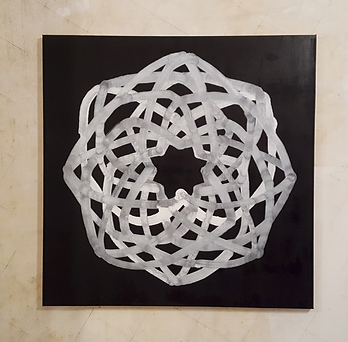Marie Cloquet
TRAVELING LIGHT
08/09/2019 - 20/10/2019
Marc Rossignol
Synchrone
Opening Sunday 9 September 2018
Marc Rossignol
Synchrone
Opening Sunday 9 September 2018
Marc Rossignol
Synchrone
Opening Sunday 9 September 2018
Marc Rossignol
Synchrone
Opening Sunday 9 September 2018
Herman Van Ingelgem
Foreign Bodies & Protheses
06/09/2021 - 17/10/2021


Sina Hensel & Hannah Mevis - Pale Burnt Lake
While Mother Earth is busy sustaining global interdependencies, human and non-human bodies similarly strive to perform resilience.
Microalgae or plants produce saturated dyes as a protection against heat.
Human bodies join forces to stop the past from repeating itself.
The duo exhibition Pale Burnt Lake by artists Sina Hensel and Hannah Mevis draws attention to current states and signals of bodily perception in human and non-human life forms.
Whereas for Sina the lens of colour is a means to grasp new pathological vulnerabilities such as thermophobia (fear or intolerance to heat) or heliophobia (fear or intolerance to solar radiation), Hannah focuses on the exhaustion of sculptures and how they represent the marginalization of the female. The exhibition translates these phenomena and body states beyond language - starting from the senses and for the senses - to shape a topology of human and non-human perception.
Within the exhibition context, Sina and Hannah will host events to talk about their work through the perception of one or several of our five senses. Dates: September 18th and October 9th.
More info will be shared throughout the exhibition process.
Sina Hensel (°1986 Mainz/ lives & works in Brussels and Aachen)
Sina Hensel graduated from the Academy of Fine Arts in Karlsruhe and Hamburg in 2012 and moved to Belgium in 2018 for a postgraduate degree at HISK in Ghent.
Since 2019, she is a research associate at RWTH University in Aachen at the Chair of Visual Arts in the Department of Architecture where she investigates how pigments transform over time.
and researcher at FHNW Art Academy Basel
Hannah Mevis (° 1989/lives and works in Brussels & Saarbrücken)
Hannah Mevis is a visual artist and researcher. Hannah's process-oriented practice challenges her to act as an artist, performer, organizer, writer, chef, lecturer, teacher, student or whatever role is needed within the context. At the core of her work is the curiosity for the human body in juxtaposition with more-than-human life forms. Her work finds multiple shapes. Sometimes, the spectator can wear a sculpture; float in a blue space; participate in an action to the outcome of an artwork; taste foods while hearing about their stories; create images with their minds while reading the words that she wrote. Currently, Hannah is navigating between states of exhaustion and the activity of catching cumulus.
"As the warming of the climate accelerates, cells, bodies and landscapes redden or blush more frequently. Rising tempe- ratures cause lakes to turn vermilion, skins to burn or the noses of cats to darken into one of the many shades of rose. Facing an increasingly burning earth, new pathological vul- nerablites occur such as thermophobia (fear or intolerance to heat) or heliophobia (fear or intolerance to the sun). Blus- hing can tell us in some cases that a relationship has lost its balance, in other cases it indicates solely time passing. It can be read as a sign of a (self-)care in organisms as well as a response to respective beauty standards. "
 |  |  |
|---|---|---|
 |  |  |
 |  |  |
 |  |  |
 |  |  |
 |  |  |
 |  |  |
 |  |  |
 |  |  |
 |  |  |
 |  |  |
 |  |  |
 |  |  |
 |  |
.png)
.png)

